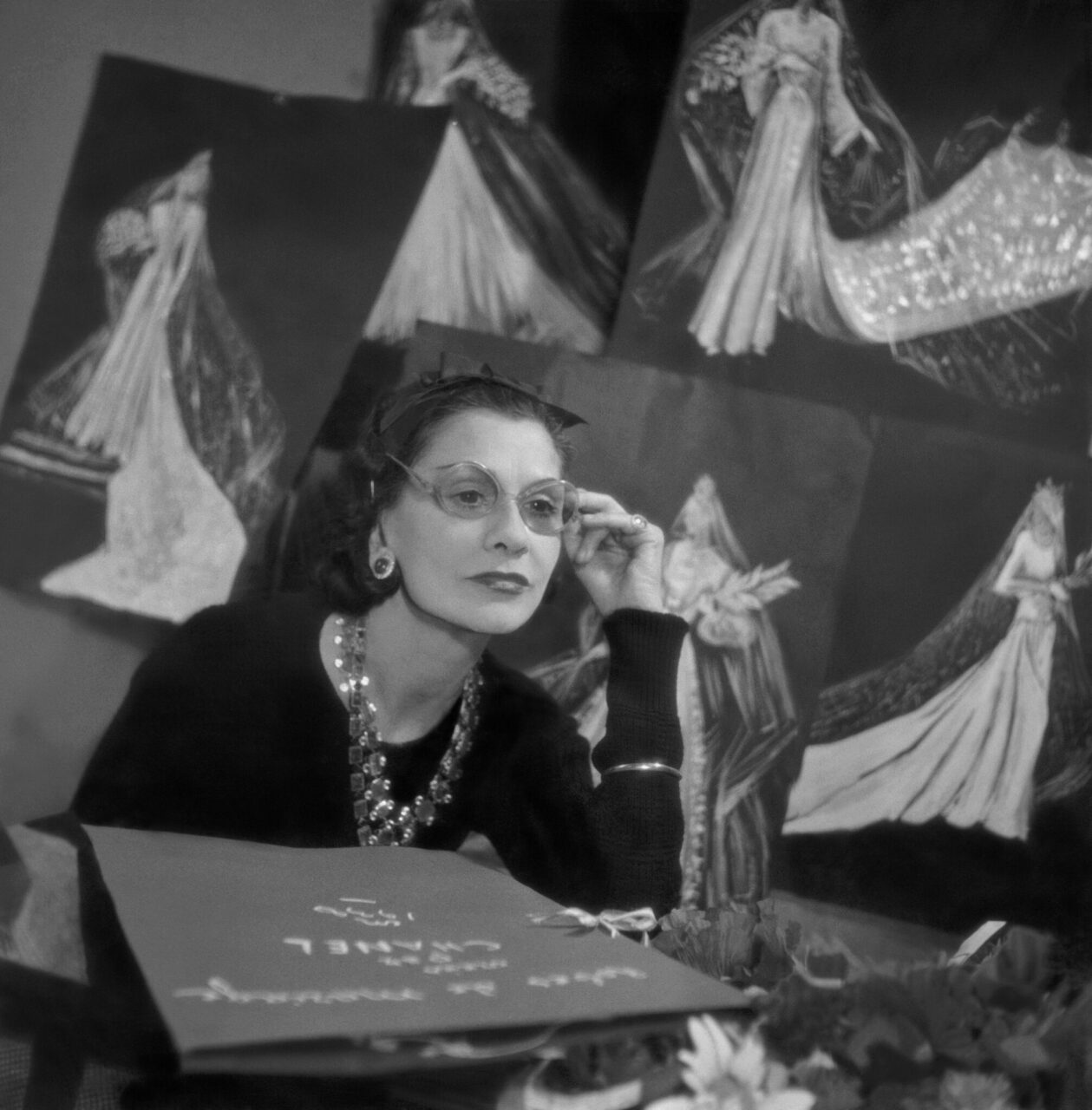
Connie Karol Burks
In advance of her visit to Palm Beach to speak at The Society of the Four Arts in March 2024, PALMER sat down with Connie Karol Burks, curator at the Victoria & Albert Museum in London to discuss Gabrielle Chanel’s enduring influence on fashion and the work that went into creating the exhibition.
What was the inspiration behind curating a CHANEL exhibition at the Victoria & Albert Museum?
The exhibition is the first UK exhibition dedicated to the work of Gabrielle Chanel and a unique opportunity for our visitors to explore in depth the work of such an influential designer. We have some key examples by Gabrielle Chanel in the V&A’s collection and the exhibition offered a chance to showcase these alongside pieces borrowed from several other important collections to examine how she shaped the modern woman’s wardrobe from her entry into fashion in 1910 to her final collection in 1971. Many are familiar with particular highlights of Gabrielle Chanel’s career, but might not be aware of the influence she had on many other aspects such as jewellery, stage and film costume that went into developing and popularising the distinctive Chanel style, and how these have endured beyond her own lifetime.
The exhibition is based on the show that took place at the Palais Galliera in Paris in 2021. We have reimagined the exhibition for the V&A, with over 170 new objects including 100 new looks on mannequins, several of which have never before been on public Museum display. And we are delighted to display two costumes designed by Gabrielle Chanel for the Ballet Russes production Le Train Bleu in 1924, which are in the V&A’s permanent collection.
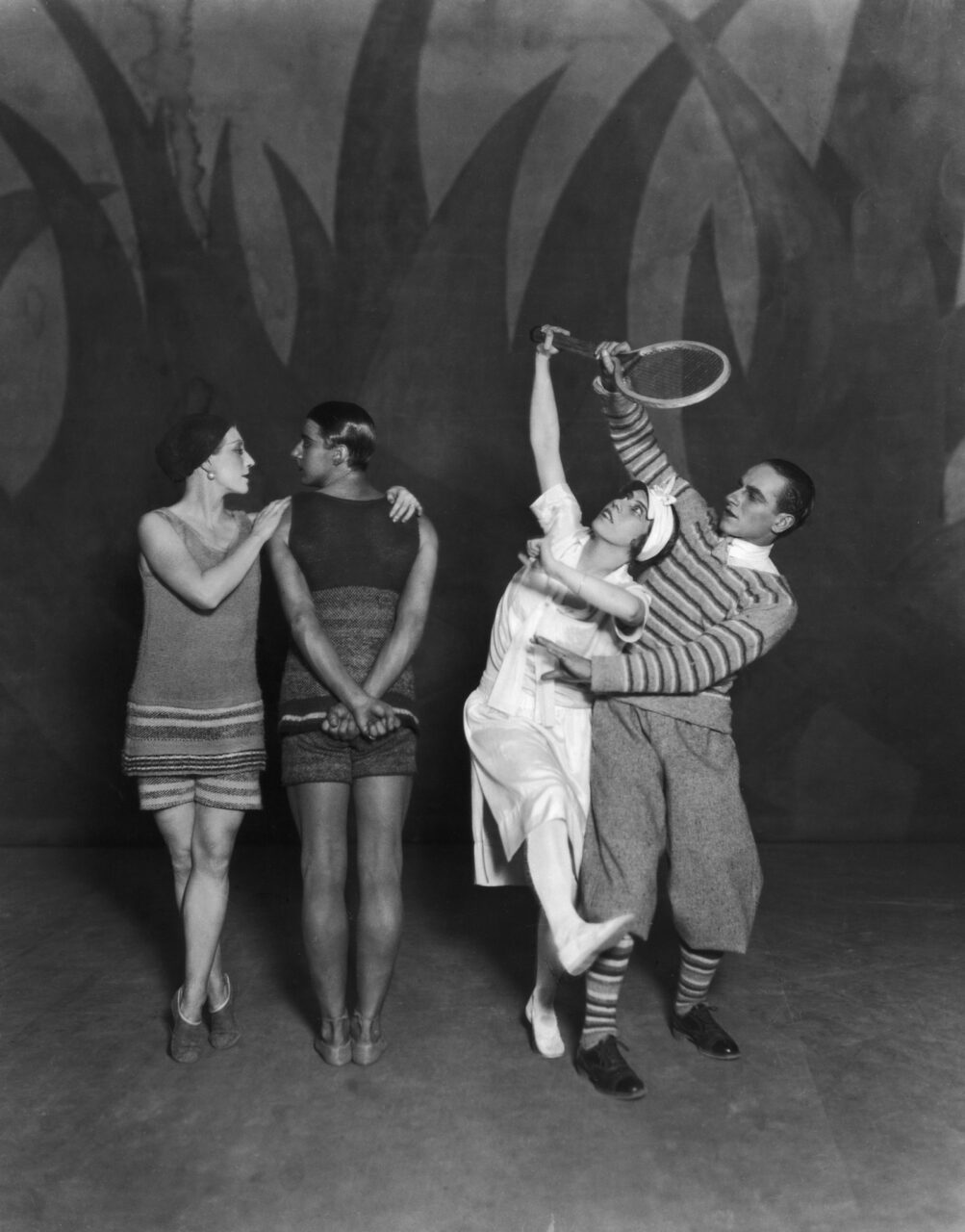
Lydia Sokolova, Anton Dolin, Bronislava Nijinska and Leon Woizikowsky after the first performance of ‘Le Train Bleu’ in Britain, at the Coliseum Theatre London, 1924.
Tell us about the process of selecting the pieces that are part of the exhibition?
When creating an exhibition, the starting point is always with the objects. We spend time seeking out objects in collections worldwide, examining and researching, and submersing ourselves into the material. From this, narratives appear, and we work on weaving them together and enabling the objects to tell a story for the visitor. The exhibition brings together objects from over 25 collections worldwide, including objects on loan from a number of USA institutions such as Indianapolis Museum of Art, Cincinnati Art Museum, Kent State University Museum, Philadelphia Museum of Art, the Mint Museum and the Costume Institute of the Metropolitan Museum of Art.
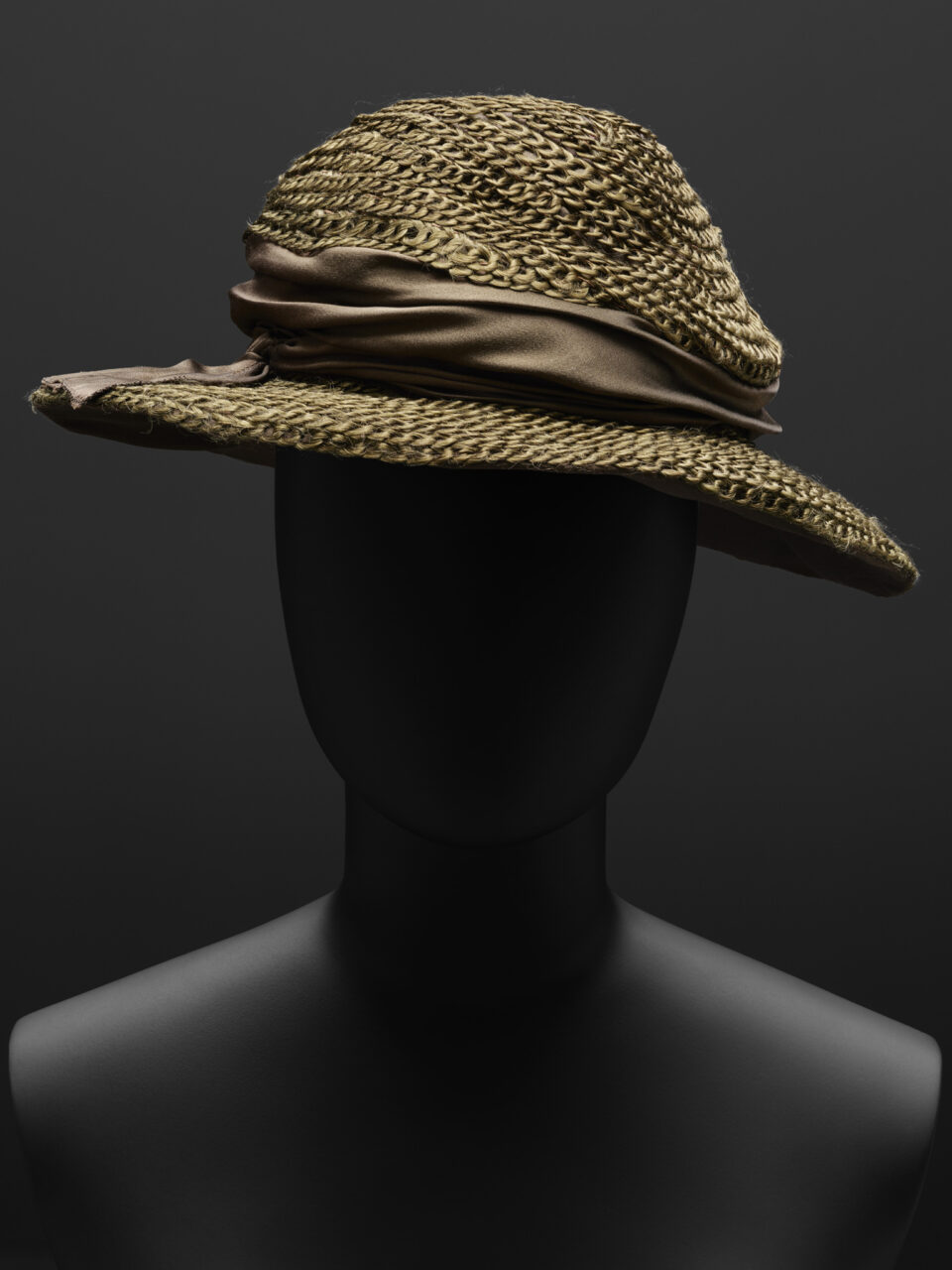
Gabrielle Chanel, Hat, silk. 1917 © CHANEL Photo Nicholas Alan Cope
What can visitors expect to see and experience at the CHANEL exhibition?
There are over 190 garments on display across ten spaces and each moment explores a different theme. Within these ten spaces, we also spotlight her contribution to Perfume and Jewelry – these spaces allow us to momentarily step out of the chronology and consider these integral aspects of Chanel’s output in detail. Her perfume and beauty ranges were an extension of her approach to fashion design. The identity of the perfume was inextricably linked to that of her sleek couture and the radically stark, graphic packaging reflected the modern style. Equally, her jewelry was always designed to compliment her fashion– her radical approach to imitation gems, oversized brooches and the historical references that inspired her.
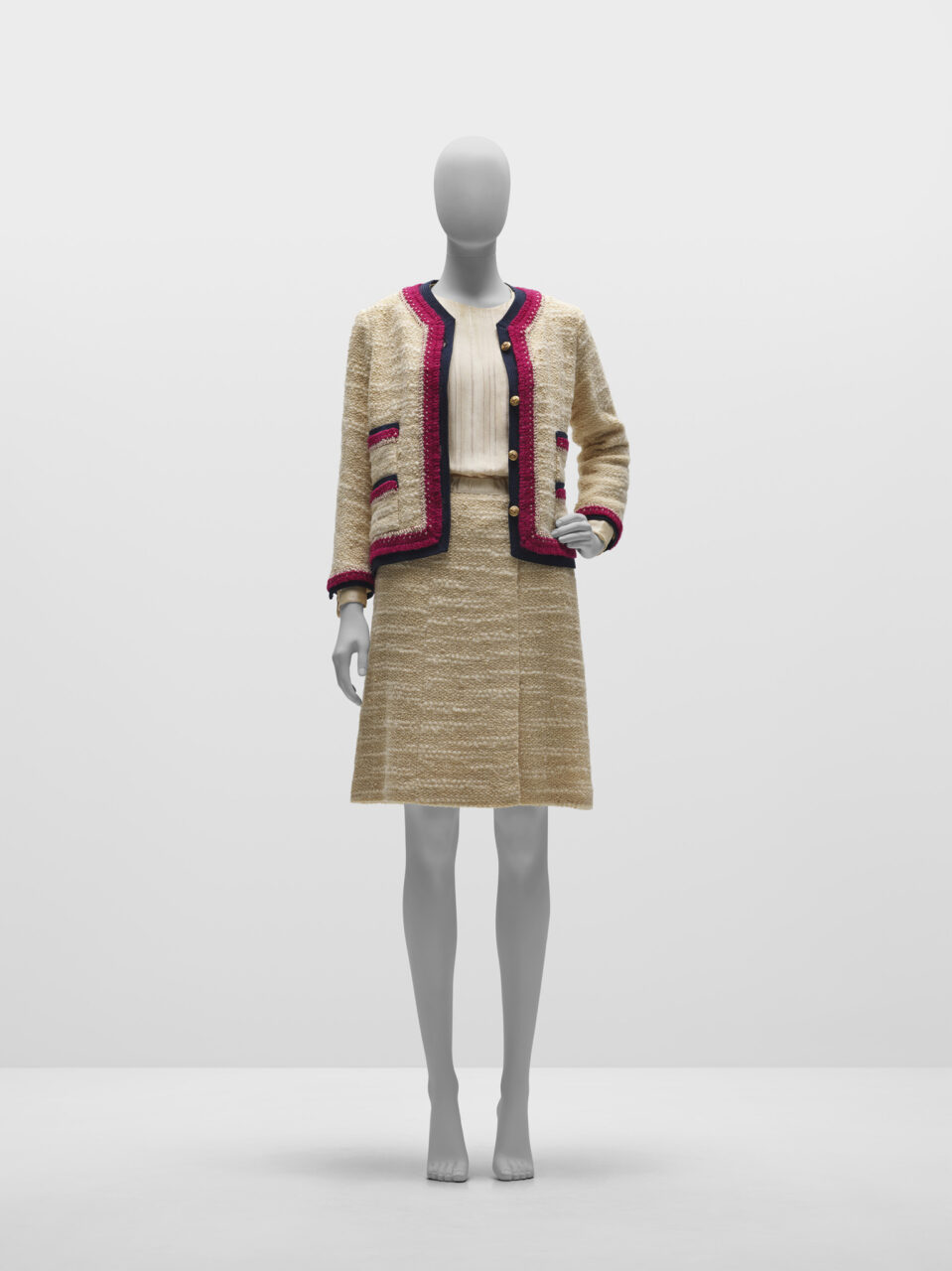
Gabrielle Chanel, Suit Autumn/Winter 1964 Patrimoine de CHANEL, Paris © CHANEL / Photo: Nicholas Alan Cope
How does the exhibition highlight CHANEL’s influence and impact on the fashion industry?
She had a very singular approach to design that I think enabled her longevity and popularity – she made garments that women enjoyed wearing. She was not designing a fantasy or an ideal, she was designing for the life of a modern woman. Her success lay in her ability to create effortlessly elegant clothes that did not compromise on the wearer’s movement or comfort. The magic is in the detail: every element was carefully thought out, every pattern perfected. She wasn’t only concerned with how the garments looked, she prioritized how they felt to wear.
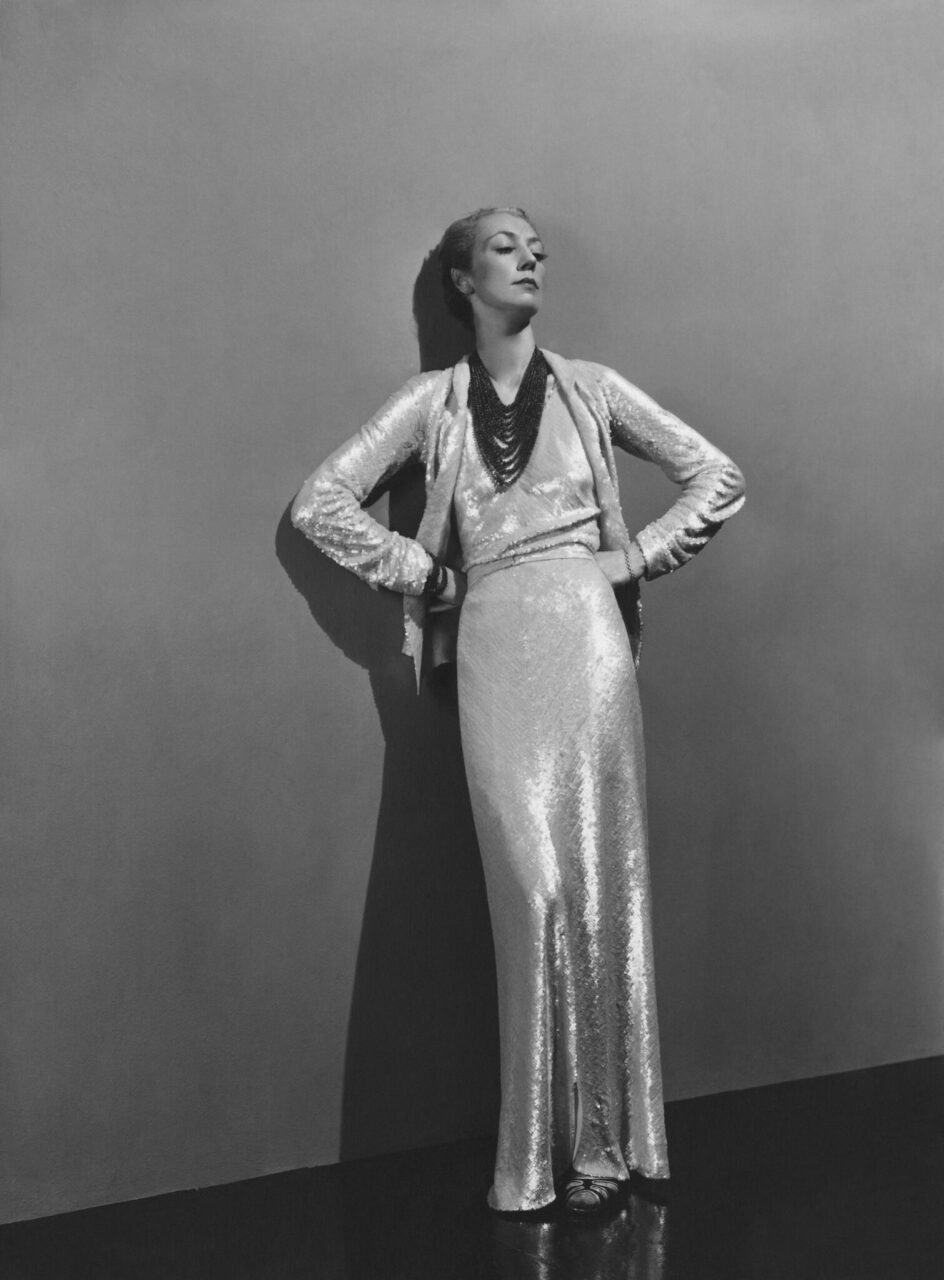
Roussy Sert wearing a long white sequin dress by Chanel and a 15 strand coral necklace. Photograph by Andre Durst, published in Vogue December 15, 1936.
Are there any iconic CHANEL pieces that are particularly significant in the exhibition?
To name only a few…the earliest garment in the exhibition is a marinière tunic blouse made of fine silk jersey and has a generous sailor collar, a simple V opening at the neck, turned back cuffs and a simple sash belt at the waist. Although over a century old, it is still strikingly contemporary looking.
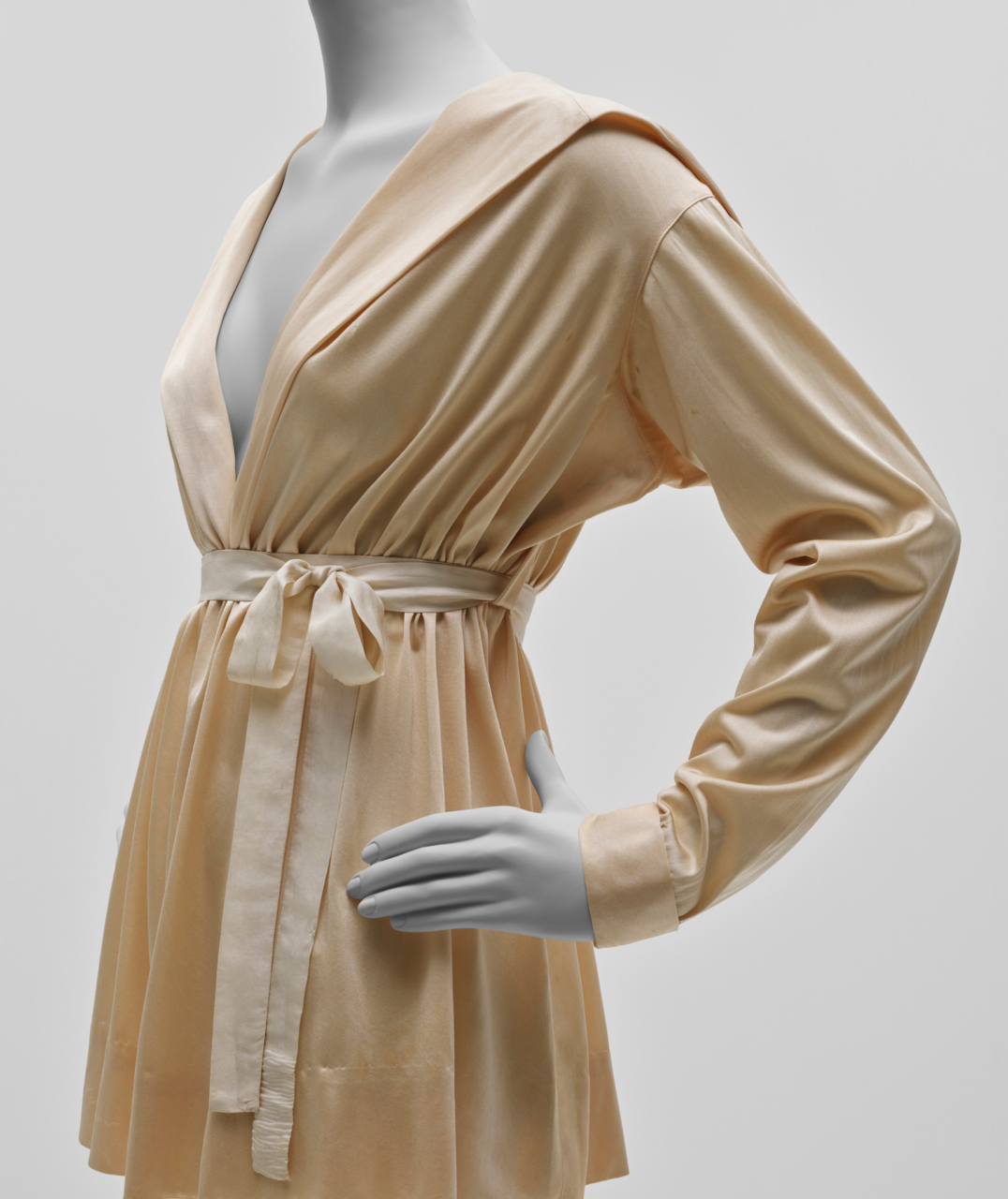
Gabrielle Chanel, Marinière Blouse, silk. SpringSummer 1916 © CHANEL Photo Nicholas Alan Cope.
Can you share any interesting stories or anecdotes about CHANEL’s history that are featured in the exhibition?
In the 1920s and early 1930s Gabrielle Chanel spent significant time in Britain, her interest in Britain was first piqued through her relationship with British shipping merchant Arthur ‘Boy’ Capel. Later, through her well-connected friend Vera Bate Lombardi, Chanel was introduced to British high society, including the Duke of Westminster, Winston Churchill and the Duke of Windsor. In the exhibition, we touch on how her time in Britain and her connections to British society influenced her fashion designs. At this time she was spending much of her time with members of the British aristocracy and participating in country sports. She took the practical protective fabrics she wore for these activities and reinterpreted them into her couture daywear.
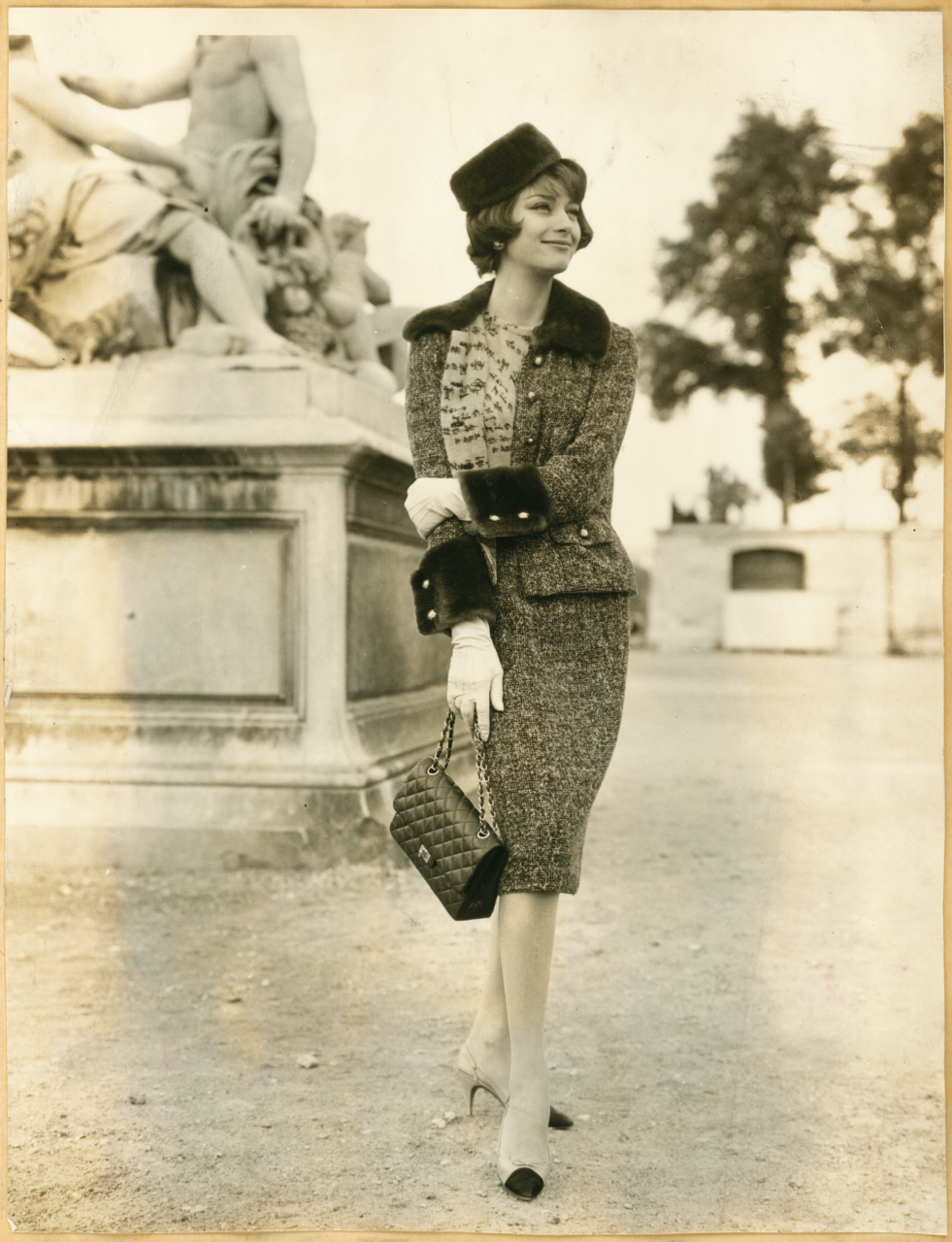
Marie-Hélène Arnaud in a tweed suit from Chanel’s AutumnWinter 1959 collection and Chanel shoes, carrying the 2.55 Chanel handbag © CHANEL
What was the most interesting thing you learned about Mlle Chanel?
There is a striking constancy in her work, a consistency of approach that runs right through the sixty-year span of her career. She wasn’t just concerned with how her clothes looked but prioritized also how they felt to wear. Her commitment to practicality was unusual for a designer of her period, and her skill to combine practicality with sleek style was unique. Of course, Chanel’s impact is not only in fashion but also product design – the minimalist design of the packaging of her perfume looks as modern today as it did when it was first released over 100 years ago.
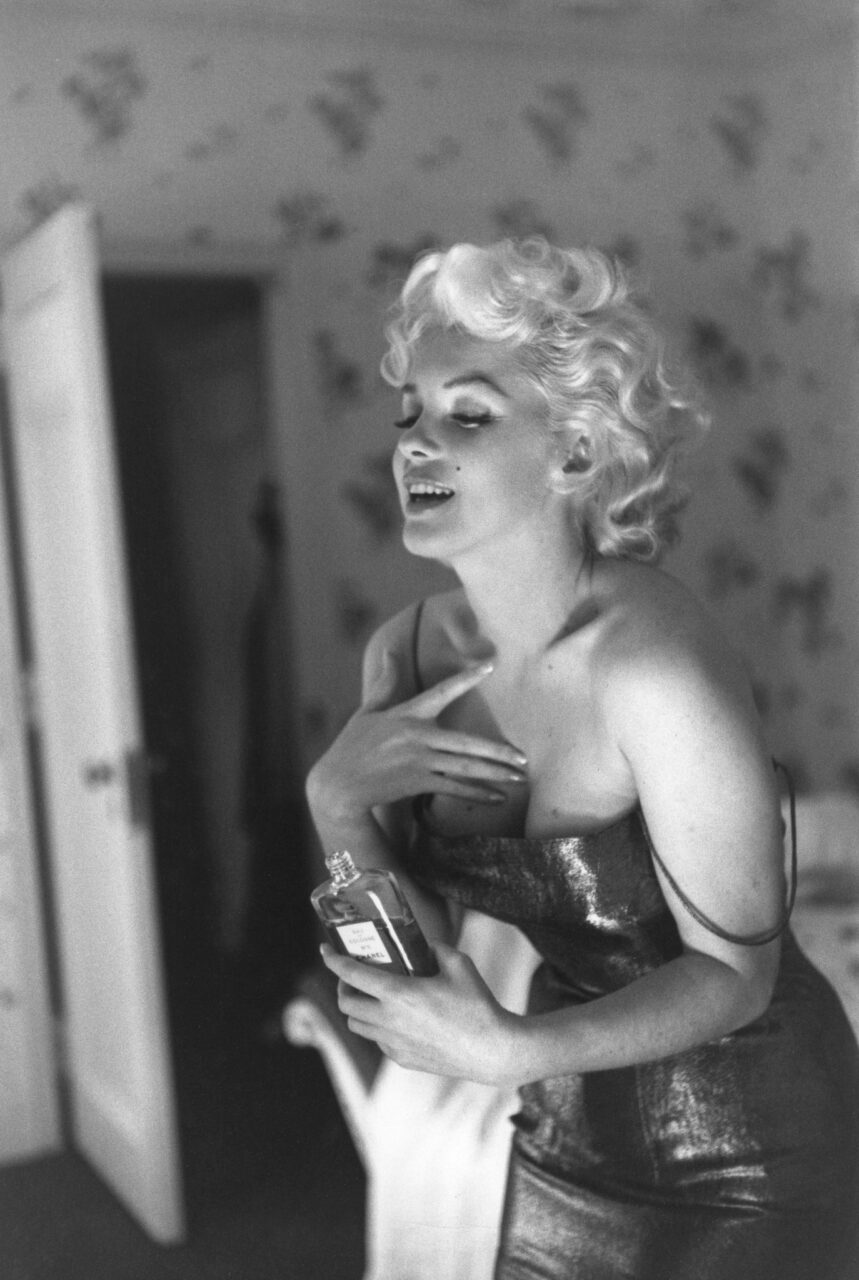
Marilyn Monroe applying Chanel N°5, photograph by Ed Feingersh, 1955, New York. © Ed Feingersh Michael Ochs Archives Getty Images
What was the most shocking?
We were surprised by some of pieces that we came across in the archives that really highlighted an interest in uncompromisingly bright, bold colors. We consciously injected examples of Chanel’s skilled use of color in each period, the colors of her delicate floral prints and graphic abstract patterns of the 1920s and 30s. In the first part of her career, Chanel became so known for her effective use of a particular shade of red and of blue that fashion magazines would refer to this color as ‘Chanel red’ or ‘Chanel blue’. Her playful use of color is particularly celebrated in the section of the exhibition that spotlights the classic Chanel Suit – we display over 50 iterations of the Chanel suit in every shade.
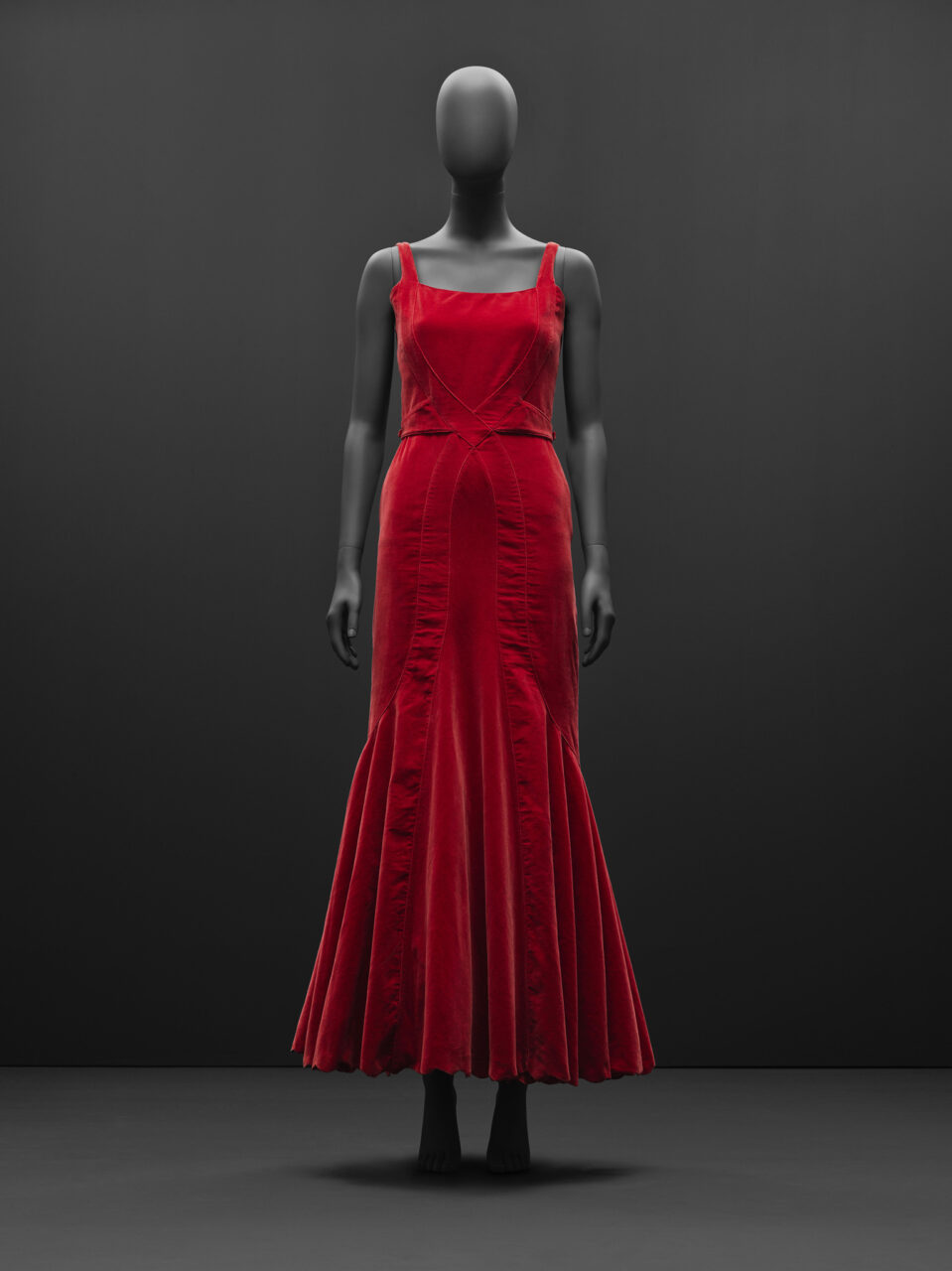
Gabrielle Chanel, Dress, cotton velvet. 1932 © CHANEL Photo Nicholas Alan Cope.
When are you coming to Palm Beach? And what are you planning to talk about?
I am looking forward to visiting Palm Beach in early March 2024 [March 7] to talk in more detail about Gabrielle Chanel’s enduring influence on fashion and the work that went into creating the exhibition.
What’s next at the V&A?
Coming up we are very excited to have recently announced an exhibition on Naomi Campbell opening next Summer, as well as the opening exhibition of the new museum at V&A East on Black British music in 2025.

